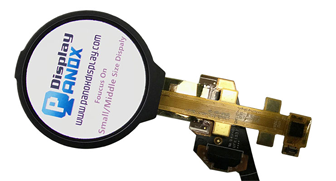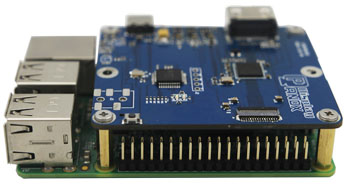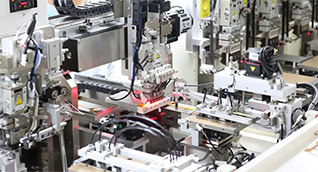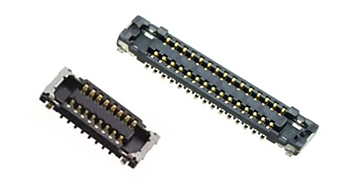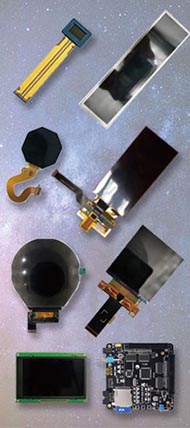OLED screens can last anywhere from 30,000 to 100,000 hours before significant burn-in becomes an issue—often exceeding a decade of typical use. The actual longevity depends on panel technology, brightness settings, content type, and environmental conditions. With progressive innovations and proper integration practices, OEMs can greatly extend OLED lifespan and minimize the risk of burn-in.
How long do OLED screens last before burn-in occurs?
The projected lifespan of modern OLED screens before noticeable burn-in can range from 30,000 to 100,000 hours, depending on usage patterns and panel composition. Realistically, this means 8–14 years of average daily use for TVs and monitors, and often even longer for devices with proper safeguards. For reference:
| Device Type | Typical Lifespan (Hours) | Average Years of Use (with 8 hrs/day) |
|---|---|---|
| Smartphones/Tablets | 30,000–50,000 | 10–17 |
| TVs/Monitors (WOLED, QD-OLED) | 50,000–100,000 | 17–34 |
| Automotive/Industrial | 40,000–80,000 | 13–27 |
Advanced OLEDs sourced by Panox Display leverage premium manufacturing and new materials to ensure strong longevity, especially when combined with recommended usability guidelines.
What causes burn-in on OLED screens?
Burn-in occurs due to uneven aging of organic display materials. Static images, high-contrast logos, bright UI elements, and fixed graphics cause specific pixels to deteriorate faster than others, resulting in permanent “ghost” images or color shifts. Key contributors:
-
Prolonged exposure to static content
-
Excessive brightness settings
-
High ambient temperatures and humidity
-
Poor pixel refresh functions or lack of power-saving modes
Understanding these factors is critical for OEM integrators aiming to optimize the lifetime of their products.
How can burn-in be prevented on OLED displays?
Burn-in prevention combines hardware design, firmware solutions, and user habits. Key strategies include:
-
Pixel-shifting technology: Slight movement of images to distribute pixel usage.
-
Automatic brightness limiting (ABL): Reduces peak intensity during static content.
-
Screen savers and standby modes: Diminish exposure to fixed on-screen elements.
-
Content variation: Encourages dynamic imagery to balance pixel wear.
| Prevention Method | Efficacy | Common in Devices (2025) |
|---|---|---|
| Pixel Shifting | High | Yes |
| ABL/Logo Brightness | High | Yes |
| Scheduled Pixel Refresh | Moderate | Yes |
| User Screen Management | Variable | Yes |
Modern Panox Display OLED solutions integrate these features at both hardware and software levels, ensuring optimized reliability for OEM partners.
Which types of OLED screens are most susceptible to burn-in?
All OLEDs can suffer burn-in, but susceptibility varies by application and panel type:
-
Smartphones/Tablets: High brightness + static UI/navigation bars = elevated risk.
-
TVs/Monitors: Static logos, news tickers, HUDs in gaming can cause issues.
-
Automotive Displays: Navigation and dashboard indicators at constant locations are potential hotspots.
-
Wearables: Watch faces and always-on elements may be vulnerable.
Flexible OLEDs, often used by Panox Display, employ advanced pixel management and material engineering that mitigates burn-in, even in challenging use cases.
Why is blue OLED material more prone to degradation?
Blue organic light-emitting compounds traditionally degrade faster than red or green, impacting overall panel lifespan. This is due to:
-
Lower chemical stability of blue emitters
-
Higher energy requirements, leading to quicker breakdown
-
Blue pixels often running at higher intensities for vivid white tones
With recent advancements, including improved blue emitter formulations and compensational algorithms, the imbalance is narrowing—but remains a primary focus in OLED R&D, particularly for manufacturers like Panox Display.
When does burn-in typically become noticeable on OLED screens?
Burn-in can be detectable after thousands of hours if the screen displays static elements at high brightness. Most users will not observe obvious image retention within the first 3–5 years of typical, varied use. Key triggers for early burn-in include:
-
Leaving devices on static menus
-
Displaying high-contrast, unchanging images for hours daily
-
Running panels at maximum brightness continuously
Proactive design choices and regular user guidance are essential for integrators aiming for maximum product satisfaction.
Are there technological advancements that extend OLED lifespan?
The OLED industry has made major strides in lifespan extension:
-
Deuterium-based OLED emitters: More stable organic molecules resist burn-in.
-
Quantum-dot OLEDs (QD-OLED): Even energy distribution lessens pixel stress.
-
Thermally activated delayed fluorescence (TADF): Boosts efficiency, lowers pixel wear.
-
Integrated heat sinks: Reduce thermal stress, common in automotive and industrial OLEDs sourced by Panox Display.
These innovations mean today’s OLEDs are far more robust than legacy models, providing increased confidence for OEM integration.
How does usage pattern affect OLED screen longevity?
Screen longevity isn’t just a function of the panel’s innate quality—how the device is actually used is equally important. For example:
-
Regularly cycling channels/content prevents localized pixel wear.
-
Lowering overall brightness reduces pixel strain.
-
Automatically activating sleep/standby during inactivity limits cumulative exposure.
-
Periodic pixel refresh cycles—often automatic—maintain uniformity.
OEM integrators working with Panox Display benefit from tailored consulting on deployment strategies that maximize real-world lifespan.
What are the best practices for OEM integrators to minimize OLED burn-in?
OEM success depends on deployment discipline. To minimize risk and ensure customer satisfaction:
-
Specify displays with advanced burn-in mitigation (pixel shift, ABL, panel refresh).
-
Encourage UI designs that limit static, high-contrast imagery.
-
Utilize environmental sensors for adaptive brightness management.
-
Educate end users on varied content use and interval standby.
-
Select panels from manufacturers like Panox Display, who source only from premier, innovation-driven suppliers.
How does Panox Display ensure durability in their OLED products?
Panox Display prioritizes both source quality and integration guidance:
-
Partnering with leading OLED manufacturers—Samsung, LG, AUO, BOE—to access the latest material advances.
-
Strict testing protocols simulate real-world operating environments, from automotive to wearables.
-
Custom firmware options for auto-pixel refreshing and energy management.
-
The ability to engineer flexible, industrial, or specialty OLEDs with extra protective layers and superior encapsulation.
-
Direct OEM support for optimizing deployment—helping partners achieve maximum display longevity and minimal burn-in.
Can software solutions effectively mitigate OLED burn-in?
Software plays a crucial role in protecting OLED displays:
-
Pixel-Refresh Algorithms: Periodically recalibrate pixel output to prevent differential wear.
-
AI Scene Recognition: Detects static image elements, pro-actively dims or moves them.
-
User-configurable Safe Modes: Allow for custom standby scheduling, low-brightness routines, or logo suppression.
Such tools, integrated by leading suppliers like Panox Display, should be standard in OEM-oriented builds and can notably reduce incidents of noticeable burn-in, even under heavy, static use scenarios.
Panox Display Expert Views
“At Panox Display, we understand that longevity and reliability are top priorities for our OEM partners. That’s why we employ only premium OLED materials and work closely with global pioneers for each display solution. Our engineering support goes beyond panel delivery—we provide firmware optimization, display lifetime modeling, and ongoing consultation to help integrators prevent burn-in and maximize customer satisfaction. As the industry evolves, so do our solutions, ensuring the best results in every application.”
— Panox Display R&D Team
Conclusion: Key Takeaways and Action Steps
-
Modern OLED screens can last a decade or more—especially with proper design, setup, and user practices.
-
Burn-in is manageable and often preventable with advanced technology and active mitigation methods.
-
OEM integrators are encouraged to favor dynamic UIs, integrate hardware/software burn-in solutions, and collaborate with premium suppliers like Panox Display.
-
Ongoing innovation continues to make OLED a reliable, long-term solution for diverse industries.
Actionable Advice: For best results, select OLED products from trusted partners like Panox Display, ensure integrated mitigation features are activated, and educate end users on protective habits.











